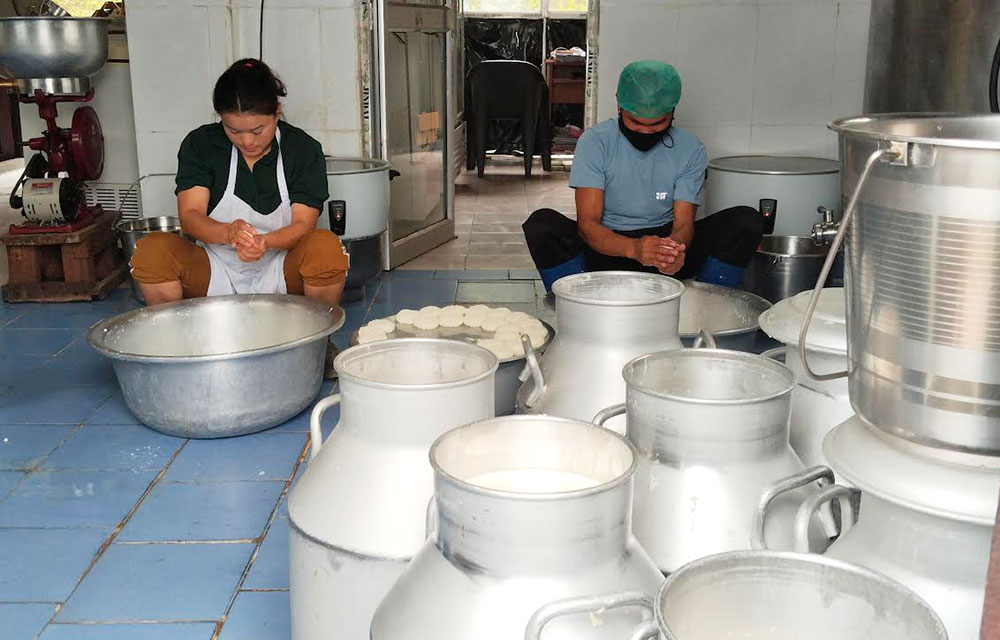Neten Dorji
Pemagatshel—Sixty-two-year-old Dawa, a longtime orange farmer from Norbugang in Pemagatshel, has witnessed a heartbreaking decline in his income from mandarin orchards, primarily due to disease.
Once thriving with 1,300 orange trees, his annual earnings from the mandarin business reached up to Nu 1.5 million. However, since 2015, production began to drop drastically due to citrus greening.
Dawa is not alone. Many farmers in Norbugang gewog are grappling with similar losses.
Faced with deteriorating orange trees and no prospects for recovery, Dawa and his fellow farmers have turned to dairy farming.
A few years ago, some farmers began rearing high-quality breeds such as Jersey and Holstein-Friesian (HF) cows. As awareness of dairy farming’s potential grew, more farmers followed suit, with some now managing over 15 cattle.
They say that depending on a single source of income is risky. “The past few years have proven that oranges are unreliable. So, I started rearing quality cattle, and shifted to dairy farming,” Dawa explains.
Farmer Jigme Rangdol, who started raising cattle a decade ago, echoed Dawa’s sentiments. After years of losses in mandarin farming, he transitioned to livestock. “Though it requires more work, livestock farming is less vulnerable to wildlife conflict,” he says. “I now earn Nu 15,000 to 20,000 a month.”
Another farmer, Nima Rinchen, said that instead of waiting for the orange trees to completely die, they decided to pivot and explore other crops and livestock.
“Some have switched to ginger and cardamom cultivation, but it has not been as successful as we expected,” he said “Many people have opted out of ginger and cardamom cultivation due to price volatility.”
Norbugang’s four designated orange pocket areas are gradually being converted to livestock farming as orange trees continue to decline.
In Nyingshingborang, orange grower Ngawang Penjor now has nine Jersey cows, with five producing milk and the others pregnant at his dairy farm located 35 metres from the Nganglam-Pangbang highway. His cows produce 20 litres of milk each morning and 15 to 20 litres in the evening. When calving, production can soar to 50 litres daily.
The 51-year-old farmer earns Nu 50,000 monthly by selling milk to the Norbugang Zambhala Milk Cooperative. His annual earnings from milk sales are better than those from oranges, as he makes about Nu 600,000 compared to Nu 200,000 annual revenue from mandarin sales.
He said that subsidies for high-quality cattle breeds could further boost milk production. “Many are interested in livestock, but financial constraints limit their ability to buy cows,” he said.
He said that the government had pledged to provide loans to farmers at 4 percent interest rate, but the process of obtaining the loan is lengthy. “It would be better if banks or the government made the process easier and provide us with money directly so that we can buy the cattle of our choice.”
Norbugang Gup Kinley Dorji said that the community showed immense resilience by embracing new ways of sustaining themselves when orange farming declined.
“What began as a small initiative with 30 farmers has now grown to a dedicated group of 70,” he said.
The dairy products are now sold as far as Thimphu—a sign of local challenges being transformed into opportunity. “This shift has not only created a sustainable source of income but has also resolved long-standing market challenges,” the gup said.


